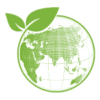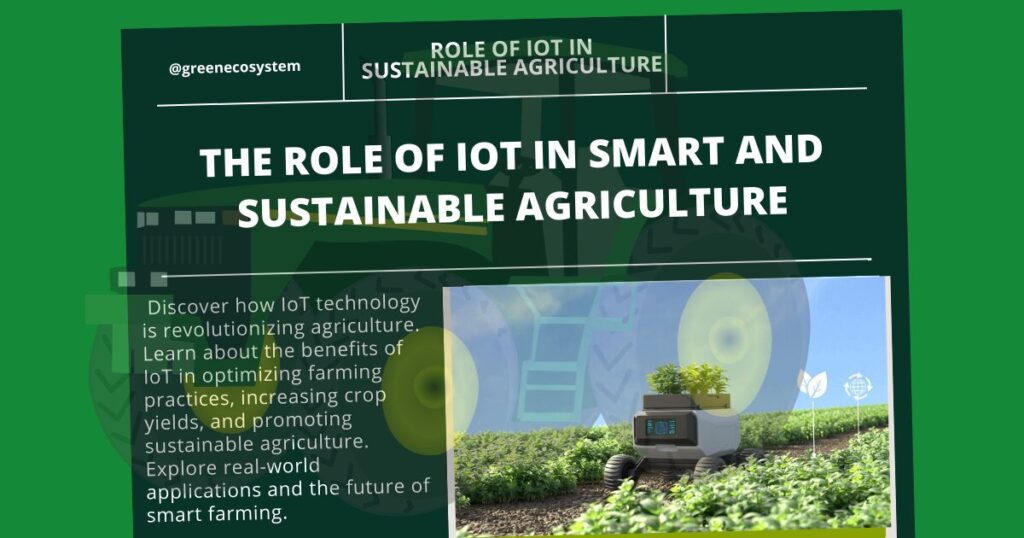Agriculture is taking a transformative turn in an era when global challenges like climate change, resource scarcity, and food security are looming large. This transformation is being driven by the Internet of Things-IoT — a network of connected devices that gather and dispense information instantly, hence molding conventional farming practices into a version of smart agriculture.
In this new agricultural landscape, IoT works in tandem with other state-of-the-art technologies, such as satellite imagery, to create an overall view of the farmlands. Satellite imagery for agricultural fields delivers critical data about crop health, soil moisture, and land use, enabling IoT devices on the ground to take action with precision. With this, farmers can track conditions around them, analyze them, and act upon them in real time-everything from the microcosm of the content of nutrients in their soil to the general, big changes in climate patterns.
The synergy between IoT and satellite technology ushers in a future where agriculture can meet increased demand without sacrificing environmental integrity and where smart, sustainable farming is no longer an ideal but an attainable reality. This article pinpoints some of the ways IoT is laying the foundation for this innovative and necessary transformation in agriculture.
Enhancing Resource Efficiency
IoT in agriculture is not just about automating tasks; this is a strategic tool that empowers farmers and elevates resource efficiency to new, unimaginable levels. It provides growers with the ability to monitor, control, and optimize resources with a degree of precision never achievable with traditional methods. It allows precisely the right amount of water, fertilizers, and pesticides to be applied based on actual needs, hence reducing waste, lowering costs, and minimizing environmental impact.
IoT devices help field owners understand real-time conditions of the soil, patterns of weather, and crop health. Integrated into agriculture with satellite data, this mesh of devices forms a comprehensive resource monitoring system. Farm satellite imagery offers a bird’s-eye view of agricultural land, detecting patterns related to soil moisture and even spotting pest infestations across large distances. This satellite data, further combined with IoT sensors on the ground, enables farmers to realize personalized interventions per crop zone.
This will help the integration of IoT and satellite technologies in understanding areas that require more or less water application. This is considered important, as the scarcity of water becomes an issue around the world. Similarly, through IoT and satellite data, farmers know when to identify nutrient deficiencies or pest hotspots to apply fertilizers and pesticides only when needed, reducing overchemicalization and enhancing quality in yield. This optimized approach to resource management no longer pursues a linear economy but a circular one: resource efficiency drives productivity, along with environmental care.
Real-Time Monitoring for Early Problem Detection
Gone are the days when farmers had to use periodic inspection or reactive approaches to protect their crops. Instead, IoT devices now help them comprehend the real-time change in conditions. This stream of continuous information comes along with important insights in terms of soil quality, moisture levels, air temperature, and pest activity, all crucial to maintaining a healthy crop yield. IoT makes this possible by giving farmers early warnings on emerging issues, thus allowing them rapid, precise responses that could greatly reduce the risk of crop loss.
Besides, satellite technology allows one to have an overall view with clear images, giving patterns in crop stress, drought-stricken areas, or disease outbreaks. Satellite images of agricultural land can document the tiniest changes that might appear in plant color or density which never would have been detected on the ground. IoT data layered on top of this bird’s-eye view gives granular, field-level insights — farmers enjoy a double advantage as their ability to monitor individual plants close and watch for emerging trends across larger expanses improves.
This combination of satellite and IoT technology is the full revolution in how farmers respond to threats. Take, for instance, the example of pest control. Conventionally, when the pests are visible and most likely to pose a threat, a big deal of the damage may just have been done. On the other hand, in this approach, IoT combined with monitoring via satellite identifies the spread of pests at a stage where it is still manageable. If satellite data identifies stress patterns in one area of a field, IoT sensors confirm that the stress is caused by pests, nutrient deficiencies, or moisture-related issues. Farmers administer targeted treatments without wholly spraying a field with pesticides and reduce both costs and environmental impact.
Moreover, IoT and satellite technology provide the further opportunity for real-time monitoring in reaching optimal use of resources to realize sustainable agricultural practices. Water, fertilizers, and pesticides are all valuable resources and the over-application of these vital elements contributes to environmental degradation, from soil depletion to water contamination. Early detection by farmers will prevent wasted resources and reduce the ecological footprint.
It also enables farmers to manage risks from unstable weather with a combination of approaches. IoT sensors observe changes in temperature and humidity, initiating notices if conditions are not very good for farming. If a sudden fall in temperature may provoke frost damage to crops, for instance, an IoT notice would allow farmers to immediately take protective measures. Satellite imagery provides early indication of seasonal weather patterns so that farmers can prepare for longer-term shifts in climate that may affect their yield.
Data-Driven Decision-Making
The role of IoT in decision-making lies in its ability to capture critical metrics — soil moisture, nutrient levels, air quality, temperature, and plant growth — that help farmers understand exactly what their crops need and when. This precision enables growers to allocate resources wisely, ensuring that fertilizers, water, and pesticides are applied only when and where they are necessary. For example, an IoT sensor in the soil can alert farmers to low moisture levels in a specific section of a field, allowing them to adjust irrigation immediately, rather than wasting water across the entire area.
IoT also enables the detection of problems as early as possible to ensure that farmers make decisions that are preventive rather than reactive. Farmers can take care of issues before they spiral out of control by observing slight changes in plant health or their soil conditions. For instance, a slight decline in moisture on the leaves, as detected by IoT devices, may signify the onset of drought stress. This will prompt the farmer to irrigate the area immediately, thus averting the likely damage and yield loss.
Moreover, IoT data enables strategic and long-term decisions. It helps farmers see trends over time and can optimize crop rotation, refine planting schedules, and anticipate needs for the next season based on recurring nutrient deficiencies or areas prone to pests.
Improving Sustainability in Farming
IoT is a key driver of sustainability in modern farming, enabling the optimization of resources and minimizing environmental damage. IoT can continuously monitor soil conditions, water levels, and weather through sensors, allowing farmers to receive information from the field to make exact data-driven decisions to avoid unnecessary waste and optimize resource use. Smart irrigation systems ensure that water does not get applied in cases where it is not needed, conserving this highly sought-after resource and avoiding runoff that can be harmful.
Additionally, IoT enhances energy efficiency by automating processes like climate control in greenhouses, reducing energy consumption and carbon emissions. Combined with insights gained from satellite data for agriculture, IoT provides a holistic view for farmers in implementing sustainable practices more broadly. This approach will be able to satisfy the requirements of modern agriculture but in a responsible way, hence securing a future wherein farming would continue to thrive in harmony with the environment.
Addressing Global Food Security
IoT changes the game in the quest for global food security, making it possible for farmers to produce more with less and in a sustainable manner. By applying precision farming practices enabled through IoT, farmers can also use only the needed amount of water, fertilizers, and pesticides without wasting any resource while enhancing crop growth. This is singularly important in all those regions that face resource scarcity, where every drop of water and every measure of nutrient counts. IoT enables growers, with the help of data-intensive practices, to fulfill the demands of an ever-increasing population while putting minimal stress on the environment.
IoT technologies support a sustainable and scalable food production approach alongside the intermittent large-scale monitoring. This better aligns with the urgent need for resilient and resource-efficient agriculture. Indeed, these changes hold the key to IoT-enabled food security through the development of more intelligent, responsive farming systems.
Fundamentally, IoT is changing agriculture into an intelligent data-based operation with a broader level of productivity, sustainability, and resilience for farming. Coupled with agriculture satellite data, this technology metamorphoses the conventional model into a future-ready model of sustainable food production. With the rise in global food demand, IoT becomes one sure way to meet such needs, focusing on environmental concerns and at the same time assisting in the health of the planet. It is IoT that makes this vision real and pushes the process of growing crops toward sustainability.
By: Vasyl Cherlinka is a Doctor of Biosciences specializing in pedology (soil science), with 30 years of experience in the field. With a degree in agrochemistry, agronomy and soil science, Dr. Cherlinka has been advising on these issues private sector for many years

